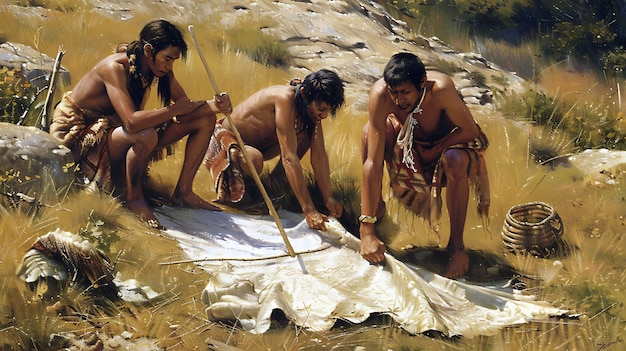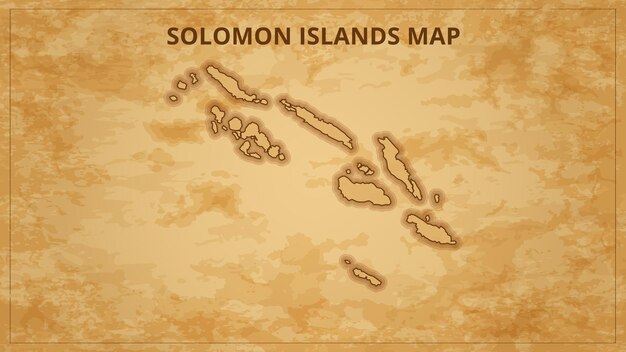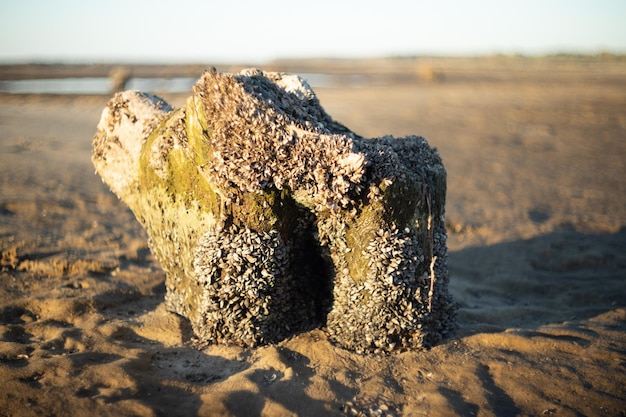The Lost Colony of Roanoke: New Evidence Links to Croatoan Tribe

The Lost Colony of Roanoke, a 16th-century English settlement that mysteriously vanished, may have integrated with the Croatoan tribe, according to emerging evidence from archaeological findings and historical analyses.
The mystery of the Lost Colony of Roanoke: New Evidence Suggests a Connection to the Croatoan Tribe continues to captivate historians and archaeologists alike. What happened to the 115 English settlers who vanished without a trace from Roanoke Island in the late 16th century?
The Enigma of Roanoke: A Historical Overview
The story of Roanoke begins with England’s ambition to establish a foothold in the New World. Led by Sir Walter Raleigh, expeditions were sent to explore and colonize the region now known as North Carolina.
Early Attempts at Colonization
The first English attempt to settle Roanoke Island in 1585 was short-lived. Facing dwindling supplies and tensions with the local Native American tribes, the colonists returned to England the following year.
The Lost Colony is Established
In 1587, a second group of settlers, including women and children, arrived at Roanoke under the leadership of Governor John White. Shortly after, White returned to England to gather supplies. Due to the Anglo-Spanish War, his return was delayed for three years.

When White finally returned in 1590, he found the colony deserted. The only clue was the word “CROATOAN” carved into a post of the palisade and “CRO” on a nearby tree. White interpreted this to mean the colonists had moved to Croatoan Island (present-day Hatteras Island), home to the Croatoan tribe.
The disappearance of the Roanoke colonists remains one of the most enduring mysteries in American history. Numerous theories have been proposed, ranging from disease and starvation to attacks by hostile Native American tribes. However, the most plausible explanation is that the colonists integrated with the Croatoan tribe.
Roanoke’s early colonial endeavors serve as a stark reminder of the perils faced by Europeans venturing into the unknown and highlights the complex relations between colonizers and native populations.
The Croatoan People: Allies or Absorbers?
The Croatoan, also known as the Hatteras, were a small Algonquin-speaking tribe inhabiting Hatteras Island, located about 50 miles southeast of Roanoke Island.
A History of Interaction
The English colonists had established relatively friendly relations with the Croatoan prior to the disappearance. Manteo, a Croatoan Native, even sailed to England with the first expedition in 1585 and was later baptized, becoming a valuable liaison between the two cultures.
Cultural Similarities and Differences
Archaeological evidence suggests that the Croatoan and the English colonists engaged in trade and cultural exchange. The Croatoan were skilled fishermen and farmers, while the English brought tools, weapons, and knowledge from Europe.
- The linguistic evidence linking the Croatoan and English language.
- Genetic clues in modern-day Hatteras Island residents.
- Archaeological finds of blended artifacts.
Despite these connections, questions remain about the nature of the relationship between the colonists and the Croatoan. Was the integration peaceful, or did it involve coercion and conflict? How did the two cultures influence each other?
The connection between the natives provides vital clues regarding the disappearance of the lost settlement and prompts questions about their culture and interactions with the colonists.
Archaeological Discoveries: Unearthing New Clues
Recent archaeological discoveries have shed new light on the mystery of the Lost Colony. Excavations at various sites on Hatteras Island and Roanoke Island have unearthed artifacts that suggest contact between the English colonists and the Croatoan.

Artifacts of Mixed Origin
Archaeologists have found English pottery shards alongside Native American arrowheads, indicating that the two groups lived in close proximity and possibly shared resources. The discovery of European-made tools adapted for Native American use further supports this theory.
Theories Behind the Discoveries
Theories surrounding the discoveries spark debate between scientists, historians, and members of the indigenous communities. The discoveries prompt further testing and investigation.
- Analysis of soil samples to determine past agricultural practices.
- Carbon dating of artifacts to establish a timeline of occupation.
- DNA analysis of remains to uncover genetic links.
The Role of Technology
Modern technology is also playing a crucial role in the search for the Lost Colony. Ground-penetrating radar and aerial photography are being used to identify potential archaeological sites and map the landscape.
These discoveries provide invaluable insights into how technology helps paint a fuller picture of what happened to the colony.
Linguistic and Genetic Analysis: Tracing the Connections
Linguistic and genetic analysis provide additional evidence linking the Lost Colony to the Croatoan tribe.
Linguistic Clues
Some researchers believe that certain words and phrases used by the descendants of the Croatoan on Hatteras Island may be of English origin. This suggests that the colonists and the Croatoan intermarried and shared their language.
Genetic Markers
Genetic studies of modern-day residents of Hatteras Island have revealed the presence of European genetic markers, further supporting the theory of integration between the colonists and the Croatoan.
- Analyzing burial sites.
- Tracing cultural practices.
- Examining oral tradition.
However, linguistic and genetic evidence is not conclusive. Critics argue that the similarities between the English language and the Croatoan language could be coincidental, and that the European genetic markers could have been introduced through other means.
Linguistic and genetic findings create discussion and are crucial in the ongoing debate over what became of the colony.
The Role of Oral History and Legends
Oral history and legends passed down through generations of Native Americans on Hatteras Island also point to a connection between the Lost Colony and the Croatoan. These stories tell of white settlers who came to live with the tribe and eventually became part of their community.
The Hatteras Indians
The Hatteras Indians, who are believed to be descendants of the Croatoan, have maintained a tradition of claiming descent from the English colonists. Some Hatteras families have even preserved surnames that are thought to be of English origin.
Interpreting the Legends
Oral histories and legends must be approached with caution, as they can be subject to embellishment and distortion over time. However, they can also provide valuable insights into the past, especially when combined with other forms of evidence.
The legends and stories provide a personal and cultural aspect to solving the Roanoke puzzle, but they require cautiousness and deep understanding.
Challenges and Controversies in the Roanoke Mystery
Despite the growing body of evidence supporting a connection between the Lost Colony and the Croatoan tribe, the mystery of Roanoke remains unsolved. Numerous challenges and controversies continue to fuel debate and speculation.
Lack of Definitive Proof
One of the main challenges is the lack of definitive proof. No written records or artifacts have been found that explicitly confirm the integration of the colonists with the Croatoan. Additionally, descendants of the Croatoan are few today.
Conflicting Interpretations
Historians and archaeologists often disagree on the interpretation of existing evidence. Some believe the colonists were victims of violence or disease, while others argue that they were assimilated into other Native American tribes.
- Preserving cultural heritage sites.
- Engaging with community stakeholders.
- Ensuring ethical research practices.
Ethical Considerations
The investigation should respect the history of tribal descendants while seeking the truth. Consider questions to be asked during grave exhumations for DNA sampling and tracing heritage.
There are many challenges and controversies in the efforts to find this colony, and they all add another layer of complexity and interest to the topic.
| Key Point | Brief Description |
|---|---|
| 🗺️ Roanoke Mystery | 16th-century English colony vanished, leaving only “Croatoan” as a clue. |
| 🤝 Croatoan Tribe | Native Algonquin-speaking people, possibly integrated with Roanoke colonists. |
| 🔍 Evidence | Archaeological finds, linguistic links, and genetic studies support the connection. |
| 📜 Oral History | Legends hint at colonists joining native tribes on Hatteras Island. |
Frequently Asked Questions
▼
The Lost Colony of Roanoke refers to a 16th-century English settlement on Roanoke Island that disappeared under mysterious circumstances. The colonists vanished sometime between 1587 and 1590.
▼
The Croatoan were a small Native American tribe who lived on Hatteras Island, near Roanoke Island. They were known to have friendly relations with the English colonists.
▼
Evidence includes the word “CROATOAN” carved on a post, archaeological finds of mixed origin, linguistic similarities, genetic markers, and oral histories.
▼
Remains of the colony have not been definitively found. DNA testing is needed to confirm heritage. This presents an ethical dilemma in disturbing grave sites.
▼
Despite ongoing research, the complete truth may remain elusive. New technologies and interdisciplinary approaches offer hope for unveiling further details.
Conclusion
The mystery of the Lost Colony of Roanoke continues to intrigue and puzzle historians and researchers. New evidence suggests a connection to the Croatoan tribe, but definitive proof remains elusive. While the ultimate fate of the colonists may never be fully known, the ongoing search for answers offers valuable insights into the complex interactions between Europeans and Native Americans in the early days of colonization.